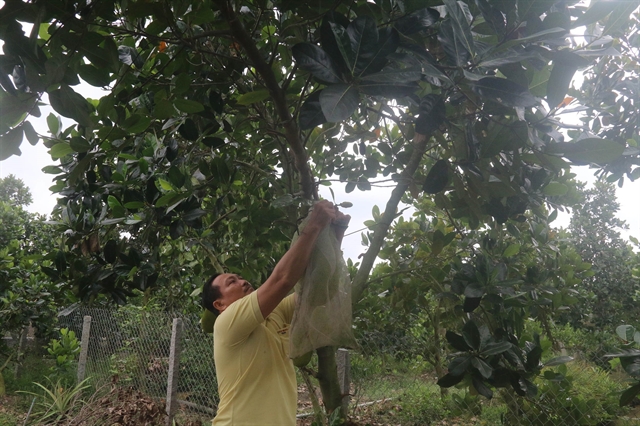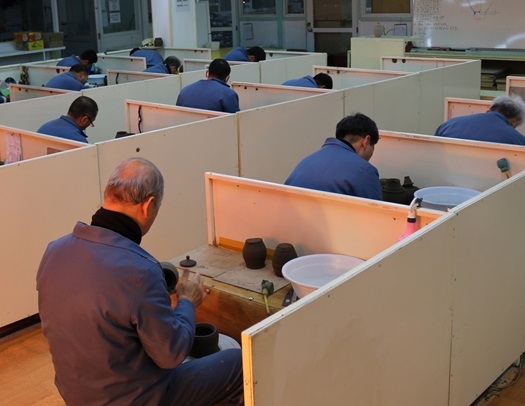 Society
Society

The Cửu Long (Mekong) Delta province of Tiền Giang is seeking to expand the areas under various fruits to help increase farmers’ incomes and exports.

|
| Nguyễn Văn Hòa, a Tiền Giang Province farmer honoured for excellence in growing and selling agricultural produce, tends his jackfruit orchard in Cai Lậy District. — VNA/VNS Photo Minh Trí |
TIỀN GIANG — The Cửu Long (Mekong) Delta province of Tiền Giang is seeking to expand the areas under various fruits to help increase farmers’ incomes and exports.
The country’s largest fruit-growing province has 14,000ha under durian in Cai Lậy and Cái Bè districts and Cai Lậy Town, 9,000ha under dragon fruit in Chợ Gạo District and 16,000ha of pineapple in Tân Phước District.
It is encouraging farmers to expand cultivation of certain fruits in coastal areas and unproductive rice fields and along canals, according to its Department of Agriculture and Rural Area.
Farmers are encouraged to use advanced techniques to increase yield, quality and output.
The province plans to set up more co-operatives and co-operative groups to link farmers together and with companies to develop value chains and ensure the former have reliable outlets.
Nguyễn Văn Mẫn, director of the department, said to meet market requirements, the department plans to teach farmers techniques for growing fruits to Vietnamese and global good agricultural practices (VietGAP and GlobalGAP) standards.
This would help them grow clean fruits, ensure origin traceability and reduce production costs, he said.
The department has instructed farmers to grow fruits in the off-season to avoid oversupply during the main harvest season, he said.
Each district in the province has advantages for growing one or more key fruits.
Cai Lậy, for instance, grows durian for exports, Chợ Gạo grows dragon fruit and Cái Bè grows the Hòa Lộc mango.
Cai Lậy has 305ha of durian orchards that meet VietGAP standards and 21ha that meet GlobalGAP standards.
Some key fruits like Cai Lậy durian, Hòa Lộc mango and Chợ Gạo dragon fruit have been granted collective brand names, creating favourable conditions for their sales domestically and exports.
Hòa Lộc mangoes are exported to the US and served on Vietnam Airlines.
Cái Bè has established the Hòa Lộc Mango Co-operative in Hòa Hưng Commune, which has 114 members who farm a total of 68ha to VietGAP standards.
Phan Thanh Sơn, head of the district Bureau of Agriculture and Rural Development, said to improve the quality of key fruits, the district focuses on teaching farmers farming techniques and how to build brand names.
They are instructed to choose disease-free and high-quality seedlings for planting, grow fruits to GAP standards and become members of co-operatives to secure outlets, he said.
The province has in recent years turned a lot of unproductive rice and other fields into high-value orchards that can adapt to saltwater in rivers and drought.
Gò Công Đông District is normally affected by saltwater intrusion in the dry season, causing difficulties for agricultural production, affecting the lives of locals.
To cope with this, it encourages farmers to grow high-value fruits like dragon fruit, Barbados cherry, soursop and lime that grow well there and fetch farmers high incomes.
Nguyễn Văn Quí, head of the Gò Công Đông Bureau of Agriculture and Rural Development, said: “The orchard economy has played no small part in improving incomes and reducing poverty in rural areas.”
It helped make Gò Công Đông and Chợ Gạo the province’s first two districts to be recognised as new style rural districts in 2020, he said.
Chợ Gạo has turned almost all unproductive paddies into speciality orchards.
The province has granted production codes for 281 jackfruit, dragon fruit, mango, watermelon, banana, rambutan, and milk apple orchards for export to China, the US, Japan, South Korea, Australia and other markets.
The province has helped 105 farmers complete procedures for obtaining VietGAP certification for their fruits and issued 458,000 origin traceability stamps to 13 establishments that grow fruits or process them.
It has 82,700ha under fruits that yielded 1.59 million tonnes last year, 4.2 per cent more than in 2020.
It exported 12,400 tonnes of fruits and vegetables last year for US$26.6 million. — VNS




